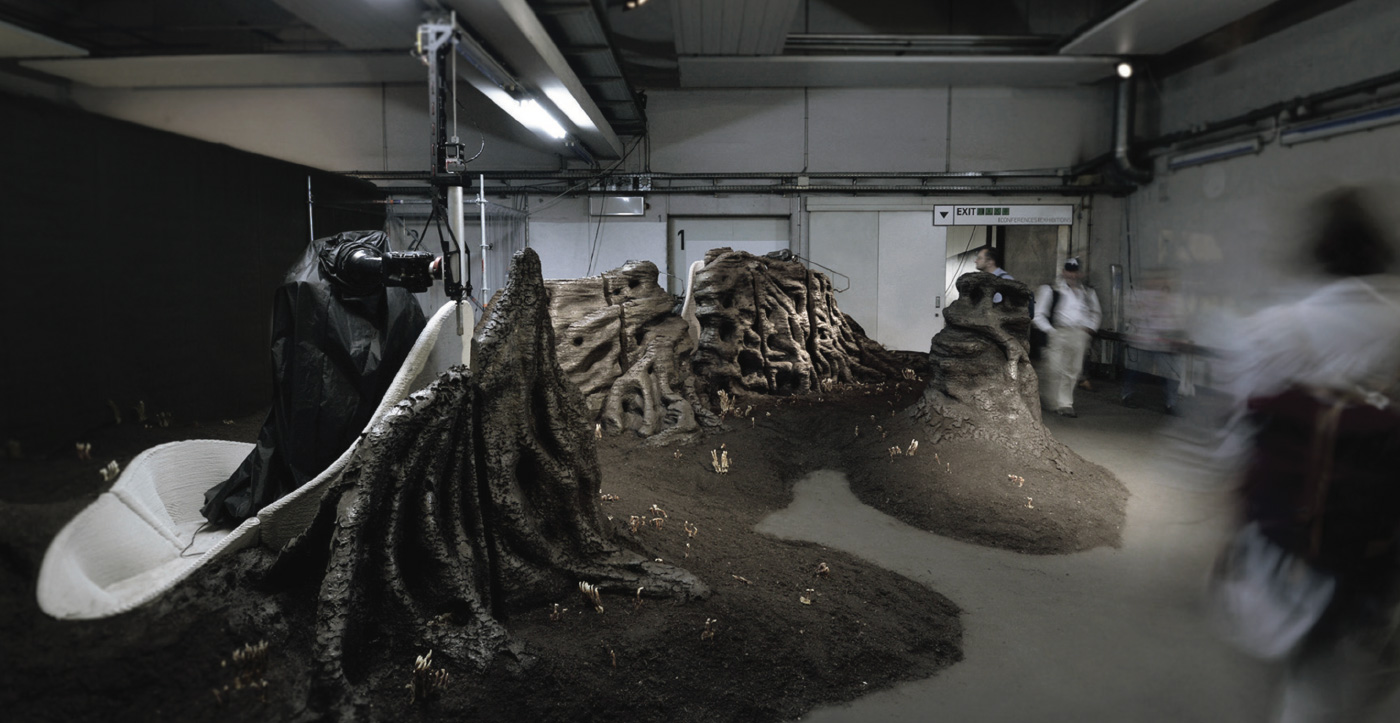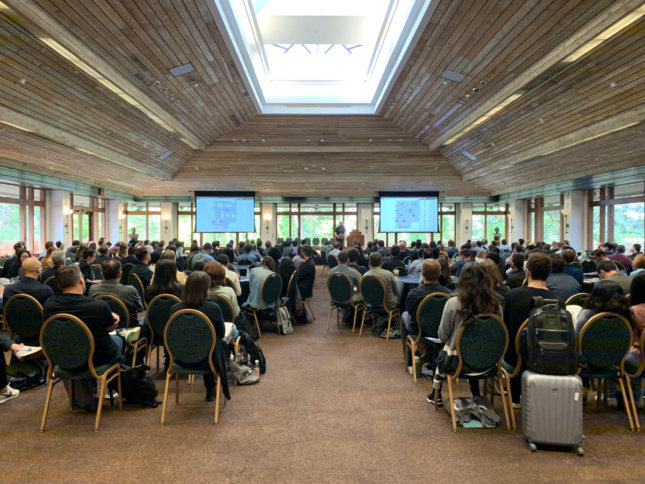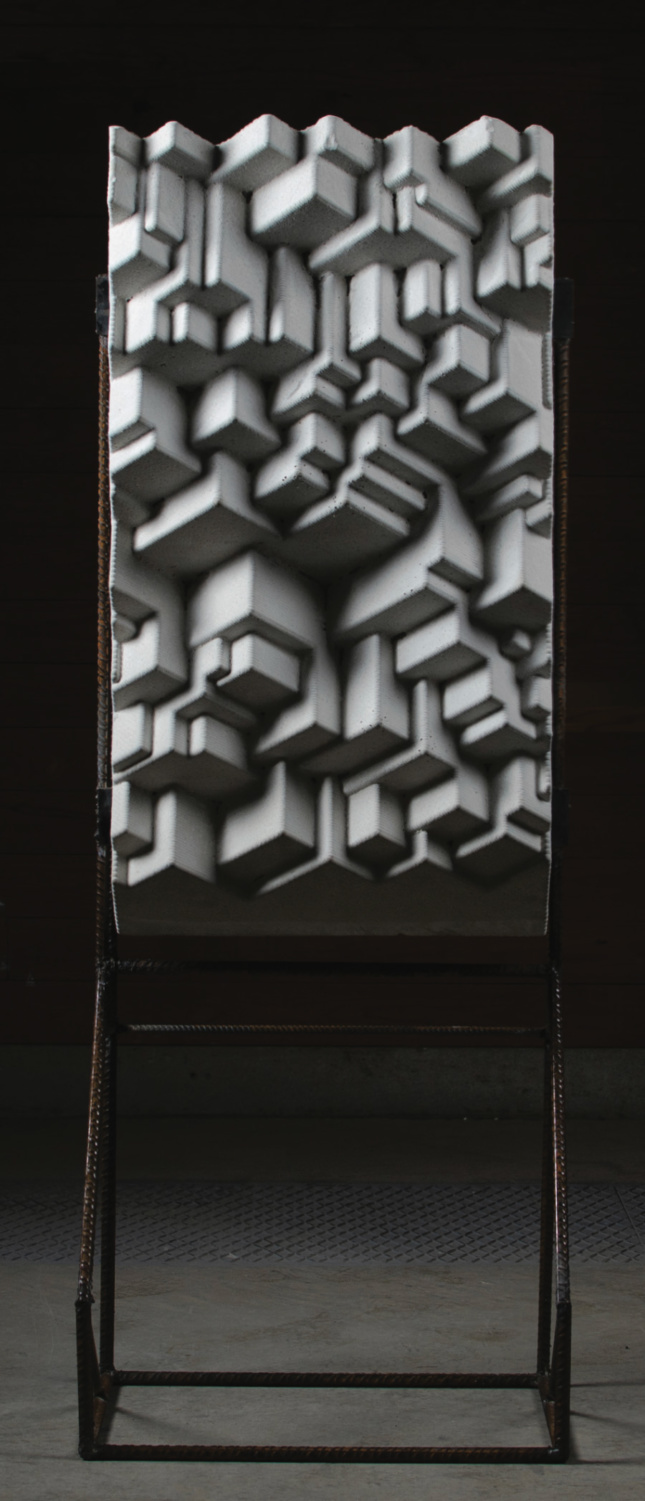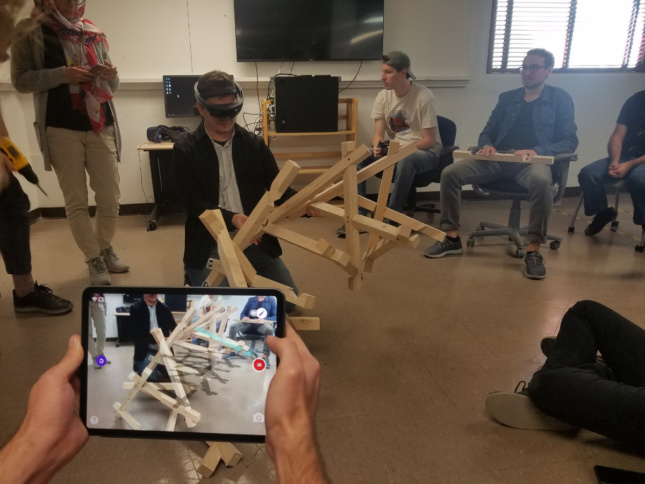The presentations and activities at this year’s ACADIA (Association for Computer Aided Design in Architecture) conference gave attendees a glimpse of potentially disruptive technologies and workflows for computational architectural production. The conference was held this year in Austin from October 12 through 14 and was organized by The University of Texas School of Architecture faculty members Kory Bieg, Danelle Briscoe, and Clay Odom.
The organizers collected papers, workshops, and projects addressing the theme of “Ubiquity and Autonomy” in computation. Contributors reflected on the state of architectural production, in which digital tools and methodologies developed in the boutique, specialized settings at the fringes of the profession a generation ago have now become commonplace in architectural offices—while at the same time, new forms of specialist computational practices are emerging which may themselves soon become mainstream.
While each participant grappled to position themselves in the cyclical and ever-advancing framework of technological inheritance and transference, the most encouraging efforts can be described in three categories: Expansions, subversions, and wholesale disruptions of the computational status quo. The expansionists claimed new technological territories, enlisting emerging and peripheral technologies to their purposes. The subvertors sampled the work and scrambled the workflows of their predecessors, configuring novel material applications in the process. Disruptors actively sought to break the techno-positivist cycle, questioning the assumptions, ethics, and values of previous generations to leverage computational design and digital processes to advance pressing and prescient political, economic, and ecological agendas.
Expansionists appropriated bleeding-edge technologies, or those newly introduced to the discipline, to stake new terrain in design and construction. The conference was the first of its kind to host a dedicated session on the use of Generative Adversarial Networks (GANs) in design. This machine-learning system pits two forms of artificial intelligence against each other—one AI acts as the creative “artist,” generating all the possible solutions to a given task, while the other acts as the “critic,” selectively editing and curating the most appropriate responses. After training the networks on archives of architectural imagery, panelists put the GANs to work on evaluative and generative design tasks, alternately generating passably authentic floor plans, building envelopes, and reconstructed streetscapes. The workshop sessions, hosted by a suite of computational research teams from several architectural offices, demonstrated possibilities for adopting emerging technologies with familiar platforms, adopting and adapting tools like Fologram and Hololens to more familiar software platforms and fabrication methods.
The subvertors, familiar with the expected uses and applications of given tools, would offer intentionally contradictory alternatives, short-circuiting established workflows and celebrating the unintended consequences of digitally enhanced platforms. A project from MIT researchers Lavender Tessmer, Yijiang Huang, and Caitlin Mueller entitled “Additive Casting of Mass-Customizable Brick” is a good example of the subvertors’ approach to interrogating workflows, enlisting precision-equipment for low-fidelity effect. As the current state-of-the-art in custom concrete formwork employs costly and time-consuming workflows to task CNC routers or robotic arms with milling, the MIT project is a critical alternative. Instead of shaping the mold, the project mobilizes the mold, achieving a wide variety of sculptural concrete “bricks” using standard cylindrical forms wielded by a robotic arm, while leveraging the ability of liquid concrete to self-level. The molds are shifted to preset positions while the concrete sets, allowing the sequential states of self-leveled concrete to intersect in complex geometries. The process is surprisingly delightful to watch, as the robot controls seven molds simultaneously like a drummer with a drumkit. The unexpected combination of high- and low-tech recalibrates possibilities for the robotic craft.
Other researchers swapped out expected materials to produce unexpected results. Vasily Sitnikov (KTH) and Peter Eigenraam (TU Delft) teamed with BuroHappold to produce IceFormwork, a project that uses milled blocks of ice as the unlikely forms for casting high-performance fiber-reinforced concrete. Ice, the team argued, is a preferred, environmentally neutral alternative to industry-standard EPS foam molds, which produce a vast amount of waste. Ice molds, the team demonstrated, are easy enough to make (with some help from a reliable water source and a repurposed refrigerated ISO container). Airborne particles suspended by the ice-milling process are harmless water vapor, unlike the dangerous foam dust requiring ventilation equipment and other protective measures. When it comes to de-molding, the ice can simply be left outside to melt.
“IceFormwork for
Cast HPFRC Elements” (Vasily Sitnikov, Peter Eigenraam, Panagiotis Papanastasis, Stephan Wassermann-Fry)
While these investigations showcased new ways to hack the assembly process of cast building elements, their choice of concrete as a material contradicted a growing consensus in the panels; that designers should actively seek alternatives to the glut of concrete in the building industry, given the high ecological cost and high carbon footprint of concrete manufacturing in the context of an accelerating global sand shortage. Daniela Mitterberger and Tiziano Derme (MAEID/University of Innsbruck) offered one of the more radical alternatives with their project “Soil 3D Printing.” The team is using hydrogels—non-toxic, biodegradable adhesives—as binding agents injected into loose soil, to form alien landscapes of networked, earthen structures that portend a near-future where biocompatible, organic additive manufacturing processes restructure geotechnical landscapes and planetary geology.
The provocations of the disruptors—who radically repurpose computational tools beyond perceived disciplinary constraints—raised profound questions about the potential for design technologies to enable and enact larger societal transformations by lining up global supply chains, material economies, and non-human constituencies squarely in their sights.
Jose Sanchez (Plethora Project/Bloom Games/USC), in the presentation he gave while accepting the Innovative Research Award, presented his work leveraging computation and game design to critically examine and transform economic and ecologic realities. Sanchez has developed a series of game environments which force players to navigate wicked problems in contemporary cities, to confront the complexities, contradictions, and paradoxes of urbanization, logistics, and manufacturing. Sanchez described the continued focus in his work on efforts to “optimize for the many”—as opposed to the few—in a period of increased economic inequality, re-assessing the predominant use of digital technologies over the past few decades to enable complex mass-customized assemblies. Sanchez, in his own work, and in projects like Bloom with Alisa Andrasek (Biothing/Bloom Games/RMIT), has been exploring the potential of digital technologies to disrupt mass-production models through high-volume production of serialized and standardized “discrete” architectural components.
Augmented reality was just one of the technologies that conference-goers got to interact with. Seen here was the workshop “Design to Fabrication: A Critical Look at Interactive Visualization and Automation in Construction.” (Erick Vernon-Galindo)
In a similar vein, Gilles Retsin (UCL/Bartlett) argued for a reconsideration of the labor practices and digital economies enmeshed in, and implicitly supported by, a building industry that has not yet come to terms with automation. By focusing on the ability of digital tools to combat material waste, Retsin argued, a generation of digitally savvy architects have ignored the potential of automation to address wasted labor. Through speculative research and small projects, Retsin is hoping to disrupt the building industry, increasing the capacity of architects to design and implement new platforms for project delivery which can combat exploitative practices.
As expansionists pointed out where to look for the next big advancement, subvertors demonstrated how existing tools could be used differently. Disruptors were some of the few to ask—and answer—why.
Stephen Mueller is a founding partner of AGENCY and a Research Assistant Professor at Texas Tech University College of Architecture in El Paso.



